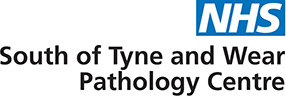IgG Subclasses
Code:
IGGS
Sample Type:
2mL Serum (Gel 5mL Yellow tube
Ref Ranges/Units:
| Age | IgG1 | IgG2 | IgG3 | IgG4 |
| 0 – 1 | 1.9–8.4 | 0.23–3.0 | 0.19–0.9 | <0.78 |
| 2 – 3 | 3.1–9.4 | 0.36–2.3 | 0.17–0.7 | <0.54 |
| 4-5 | 3.1–9.4 | 0.61–3.5 | 0.1–1.2 | <1.13 |
| 6- 7 | 2.9–9.2 | 0.44–3.8 | 0.16–0.9 | <0.99 |
| 8-9 | 4.3–10.2 | 0.72–4.3 | 0.13-0.9 | <0.93 |
| 10- 11 | 4.2–10.6 | 0.76–3.6 | 0.17– 1.7 | <0.15 |
| 12 – 13 | 3.4–11.5 | 1.0–4.6 | 0.21–1.3 | <1.36 |
| 14 – 17 | 3.2–8.6 | 1.3–5.0 | 0.23–2.0 | <1.57 |
| >17 | 3.8–9.3 | 1.2–7.0 | 0.22–1.8 | <0.86 |
Manufacturer’s and PRU Reference ranges verified in-house.
Turnaround:
2 Weeks
Frequency of Analysis: Every 10-14 days
Special Precautions/Comments:
Method: Nephelometry Calibration: Calibrated to CRM470. External QA: UK NEQAS Scheme for IgG subclasses. IQC: Commercial preparation and kit controls
Interferences: None known
Interpretation: Need to consider in clinical context. Discuss with an Immunologist.
Additional Information:
Indication: Immunodeficiency
Background Information: IgG1, IgG3 & IgG4 immunoglobulins are predominantly directed against protein antigens, while IgG2 antibodies are directed towards polysaccahride antigens. IgG1 is the major contributor to total IgG. It is important to note that normal total IgG and subclass IgG levels do not exclude significant humoral immunodeficiency. Individuals can have normal levels of immunoglobulins but still be unable to mount an adequate immune response to an invading pathogen. Patients can have low or absent IgG subclasses but normal total immunoglobulin concentrations [1]. Low IgG1 can be seen in primary or secondary immunodeficiency but often does not occur in isolation. Low IgG2 concentration may be observed in individuals susceptible to bacterial infections. The clinical significance of low/absent IgG3 and IgG4 is uncertain [2].
References: Herriot R and Sewell WAC. Antibody deficiency. J. Clin. Pathol. 2008. 61(9):994-1000. PRU Handbook of Clinical Immunochemistry. 4th Ed. 2007. Buckley RH. Immunoglobulin G subclass deficiency: fact or fancy? 2002. Curr Allergy Asthma Rep. 2(5):356-360. [Ref 1] Maguire GA, Kumararatne DS, Joyce HJ. Are there any clinical indications for measuring IgG subclasses? 2002 Ann Clin Biochem. 39(4):374-377. [Ref 2]
See Also: Functional antibodies.
Telephone Gateshead Lab: 0191.4456499 Option 4, Option 1


